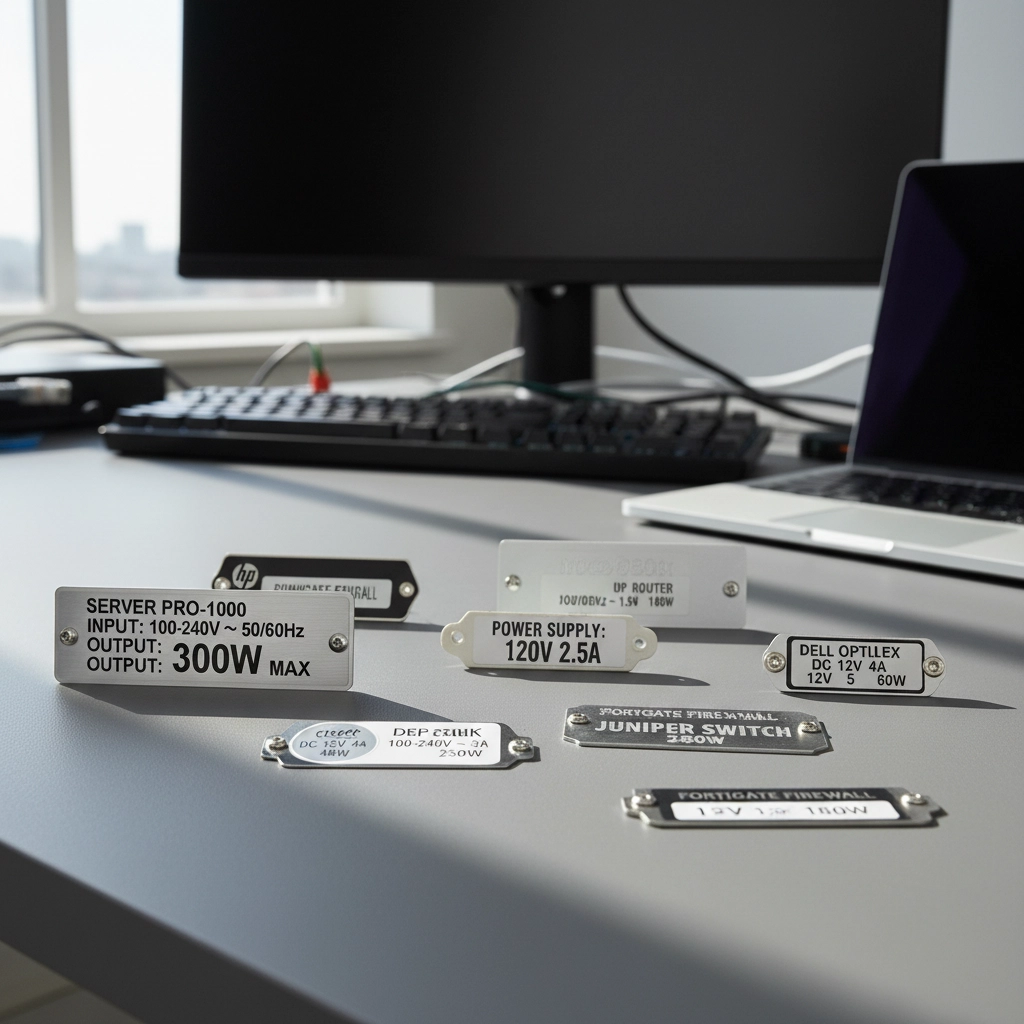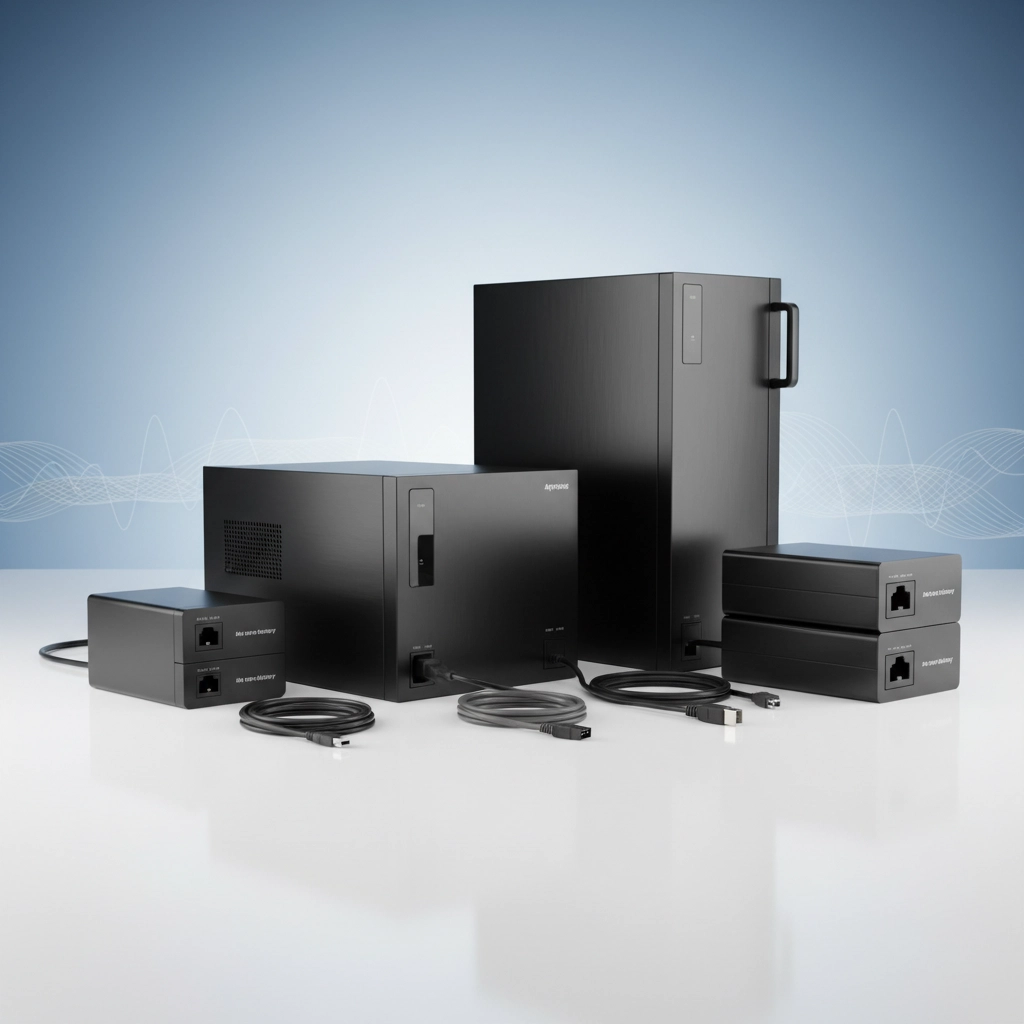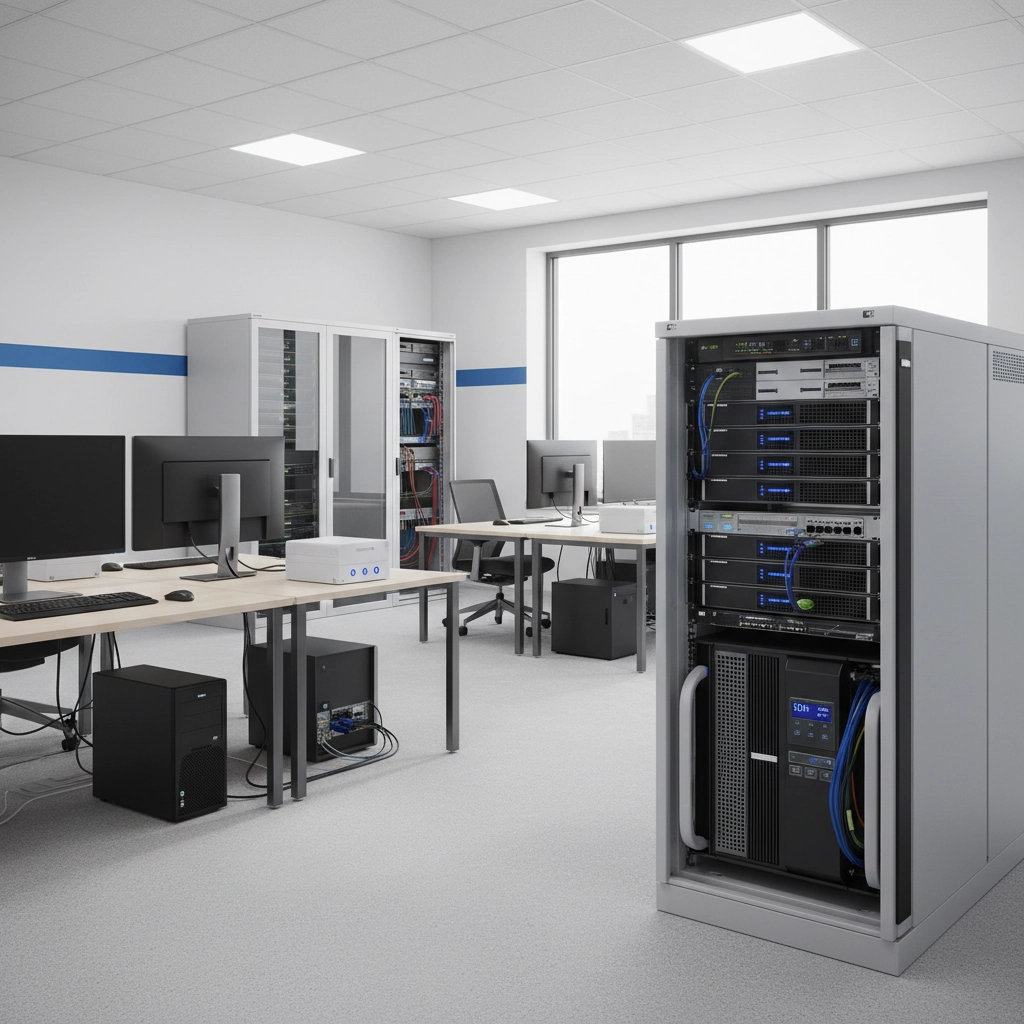
How to Choose the Best UPS System in 5 Minutes (Sized Right for Your Needs)
Share
Look, I get it. Shopping for a UPS system can feel overwhelming. You've got dozens of models, confusing specifications, and that nagging worry that you'll pick the wrong size and either waste money or leave your equipment unprotected.
But here's the thing – choosing the right UPS doesn't have to take hours of research. With the right approach, you can nail down exactly what you need in about five minutes. Let me walk you through the process that I use with my customers every day.
Step 1: Add Up Your Power Requirements (2 minutes)
This is where most people get stuck, but it's actually pretty straightforward. You need to figure out how much power all your equipment draws when it's running.
Grab a notepad and walk around to every piece of equipment you want to protect. Look for a label or sticker – usually on the back or bottom – that shows the power consumption. You're looking for either:
- Watts (W) – the actual power your device uses
- Volt-Amps (VA) – the apparent power (this is usually a higher number)
- Volts and Amps – multiply these together to get VA

Don't overthink this part. If you see watts, write down watts. If you see VA, write down VA. If you only see volts and amps, do the quick math: 120V × 2A = 240VA.
Pro tip: For most modern equipment like computers and servers, if you have watts but need VA, just multiply the watts by 1.1. So 500W becomes about 550VA. Close enough for government work.
Common power draws to give you a ballpark:
- Desktop computer: 300-500W
- Server: 400-800W
- Network switch: 20-50W
- Monitor: 30-100W
- Router/modem: 10-30W
Add it all up. Let's say you get 1,200W total. Remember this number – we'll need it in the next step.
Step 2: Apply the Safety Factor (1 minute)
Here's where a lot of people mess up. They calculate their exact power needs and buy a UPS that's just barely big enough. Don't do this.
Your UPS should never run at 100% capacity. It's bad for efficiency, bad for the batteries, and leaves you no room for growth. The sweet spot is running your UPS at about 75-80% of its rated capacity.
The quick formula: Take your total power requirement and multiply by 1.3.
So if you calculated 1,200W, you need: 1,200W × 1.3 = 1,560W minimum UPS capacity.
Why 1.3? It gives you that 75% utilization rate plus a little extra breathing room for when you inevitably add another device next month.
Step 3: Think About Runtime (30 seconds)
How long do you need your equipment to stay up when the power goes out?
- 5-10 minutes: Just enough time for a graceful shutdown
- 15-30 minutes: Ride out brief outages, orderly shutdown for longer ones
- 1+ hours: You need extended battery packs or a larger UPS
Most small businesses and home offices are fine with 10-15 minutes. That gives you time to save work and shut down properly without paying for expensive extended runtime you don't need.

If you need longer runtime, brands like APC by Schneider Electric and CyberPower offer external battery packs that can extend your runtime significantly without buying a massive UPS.
Step 4: Consider Your Equipment Type (1 minute)
Not all equipment is created equal when it comes to power requirements.
Standard stuff (computers, switches, monitors): Use your calculations as-is.
Motor-driven equipment (some printers, older servers with spinning drives): These can draw 3-5 times their normal power when starting up. If you have equipment like this, bump your UPS size up another 20-30%.
Sensitive equipment (servers, network gear): Look for UPS systems with "online" or "double conversion" technology. These provide the cleanest power and best protection.
Step 5: Match Your Needs to the Right UPS (1.5 minutes)
Now comes the easy part – picking the actual UPS.
You know you need at least 1,560W capacity (from our example), so look for UPS systems rated for 1,600W or higher. Don't forget to check the VA rating too – make sure it's adequate for your calculated VA requirements.
For small businesses and home offices, consider these reliable options:
- CyberPower offers excellent value in the 1,000-2,000W range with user-friendly management software
- APC by Schneider Electric provides rock-solid reliability and extensive battery backup options
- Minuteman delivers commercial-grade protection with excellent customer support
- Vertiv specializes in scalable solutions perfect for growing businesses

Key features to look for:
- Enough outlets for your equipment (with some extras)
- USB or network connectivity for monitoring and auto-shutdown
- Replaceable batteries (trust me, you'll thank yourself later)
- LCD display showing load, battery status, and runtime estimates
Don't Forget the Practical Stuff
Before you buy, double-check these basics:
Physical size: Will it fit where you need it? UPS systems can be bulky.
Outlet types: Do you need standard outlets, C13/C14 connectors, or other specialty plugs?
Noise level: Larger UPS systems have cooling fans that can be loud in quiet offices.
Management software: Most modern UPS systems come with software that can automatically shut down your computers when the battery runs low. This is incredibly valuable for unattended systems.
A Real-World Example
Let me give you a concrete example. Say you've got:
- One server (600W)
- Two desktop computers (400W each)
- Network equipment (100W)
- Two monitors (100W)
Total: 1,600W
Apply safety factor: 1,600W × 1.3 = 2,080W
You'd want a UPS rated for at least 2,100W. Something like a CyberPower CP1500PFCLCD (1,500W) would be cutting it close, so you'd step up to their 2,200W model or look at an APC Smart-UPS with similar capacity.
The Bottom Line
Choosing the right UPS comes down to honest math and realistic planning. Calculate your power needs, add appropriate safety margins, and buy from a reputable brand. Don't overthink it – a properly sized UPS from any major manufacturer will serve you well for years.
The key is acting before you need it. Power problems always happen at the worst possible moment, and scrambling to buy emergency power protection usually leads to poor decisions and overspending.
Ready to protect your equipment? Our team at Ace Real Time Solutions helps businesses choose the right power protection every day. We'll walk through your specific requirements and recommend solutions that fit your needs and budget. Contact us for a free consultation, or browse our selection of UPS systems to get started.
Remember: five minutes of planning now can save you hours of headaches and potentially thousands in lost data later. Your future self will thank you.
